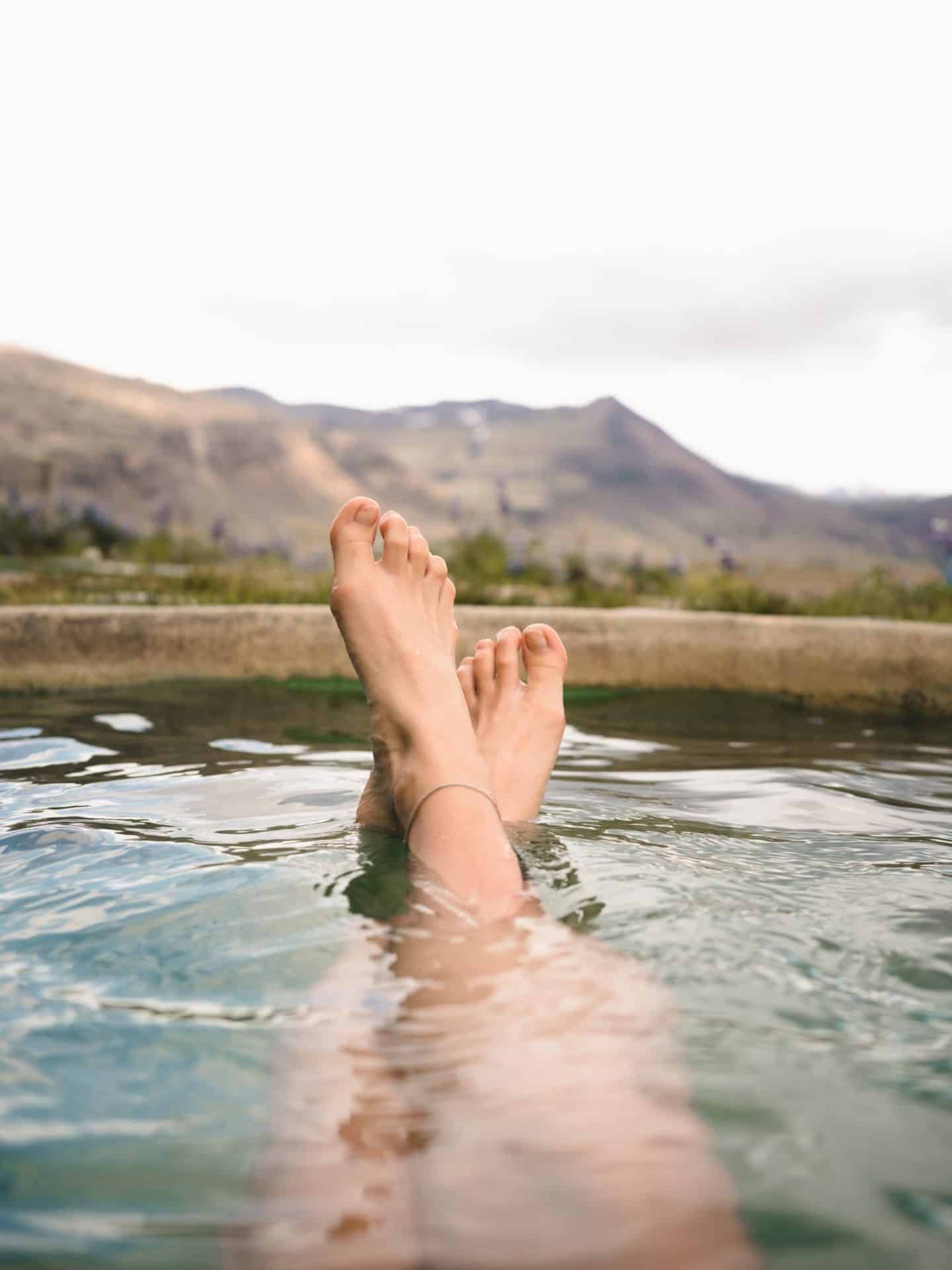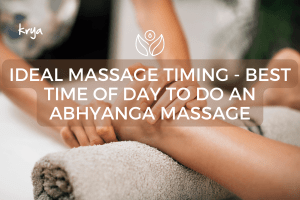This post was last updated on December 19, 2023 by Preethi Sukumaran
Tossing and turning at night? Worried about piled up work for the next day? Left wanting for better sleep? A regular Ayurvedic foot massage ( also called pada abhyanga) with an suitable Abhyanga oil can be surprisingly effective!
Why am I unable to sleep?
An inability to fall asleep or sleep extremely lightly is linked to unbalanced Vata Dosha.
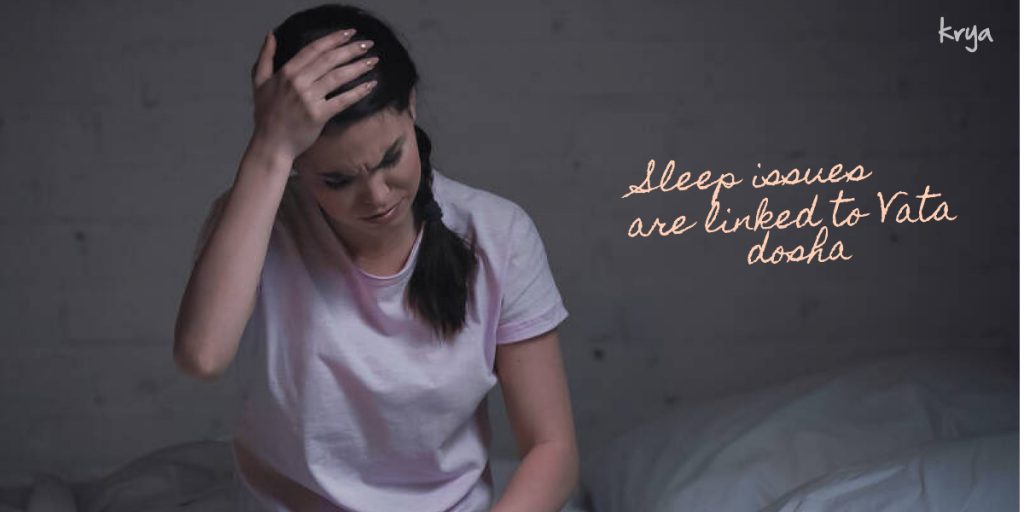
Vata dosha is flexible, subtle, quick, energetic, restless and when unbalanced we feel anxious, nervous, and unable to switch off or shut down. To calm Vata Dosha, Ayurveda suggests using well-formulated Ayurvedic “Tailas” or Ayurvedic Herbal Oils to soothe the body and mind and calm down Vata Dosha.
This process of applying an ayurvedic oil to balance Vata Dosha through the body is called “Abhyanga”. A special kind of Abhyanga is a Pada Abhyanga. Pada Abhyanga is a special foot massage in Ayurveda, which is done by applying oil to the soles of the feet, around the ankles and the Achilles tendon. A pada abhyanga can be done as a part of an overall body Abhyanga or can be done especially at night. When done as a standalone practice at night, an ayurvedic foot massage improves sleep quality, relaxes the body, relieves fatigue and stiffness in the legs, and promotes high-quality sleep.
Pitta Dosha also plays a role in certain kinds of disturbed sleep. If you fall asleep easily, but find that you wake up a few hours after you sleep and are unable to go back to sleep, you may be experiencing derangement in Pitta dosha.
The Ayurvedic pada abhyanga also helps balance deranged Pitta and nourishes and soothes eye strain. It helps in settling disturbed sleep cycles by gently balancing deranged Pitta dosha.
Benefits of an Ayurvedic foot massage (pada abhyanga)
Ayurvedic texts list certain wellness practices to be done daily. These practices fall into “Dinacharya” or a list of daily wellness practices. We are asked to follow these Dinacharya practices as regularly as possible to enjoy better health, balance and wellness. The Ayurvedic oil massage or Abhyanga is a powerful Dinacharya.
While describing the benefits of Abhyanga, the Ayurvedic texts pay special emphasis to the benefits of Pada abhyanga or foot massage with oil.
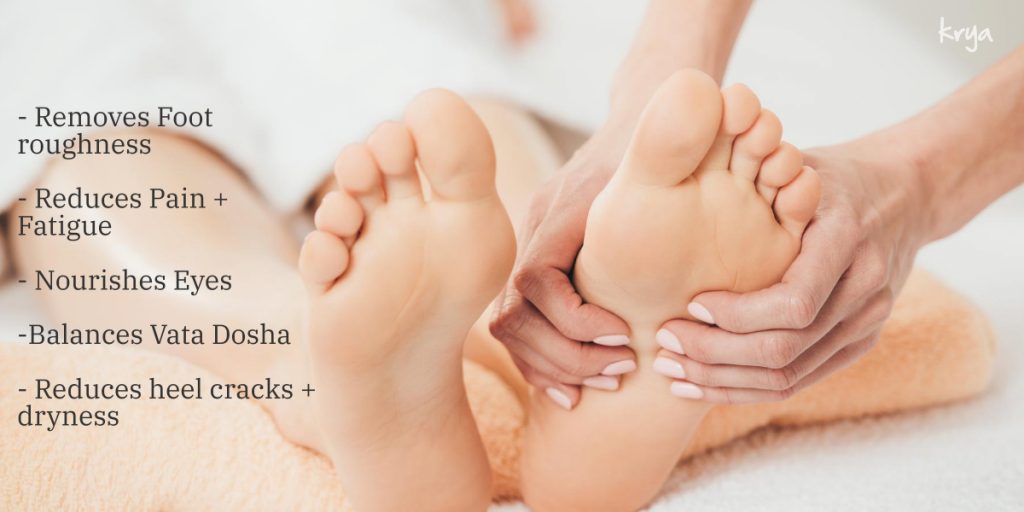
Benefits listed in Charaka Samhita:
- Keeps the feet well moisturised – removed roughness and dryness
- Removes pain and fatigue and numbness
- Reduces inflammation and tenderness in the feet
- Clarifies eyesight
- Balances deranged Vata dosha from around the feet and lower limbs
- Reduces the tendency towards sciatica
- Reduces cracking of feet, and constriction of blood vessels and ligaments in the feet
Fitting in a nightly Ayurvedic foot massage into your Schedule:
Incorporating a new ayurvedic wellness ritual often seems difficult. However, a pada abhyanga is one of the easiest and simplest Ayurvedic wellness rituals to fit into your schedule. The benefits of foot massage before bed are numerous and this ritual positively impacts the quality and timing of your sleep cycle. An ayurvedic foot massage also has many benefits for the eyes, so it is well worth the effort.
Oiling and massaging your feet does not have to be a long-drawn-out ritual. It takes only ten minutes. It is best to do this before bedtime. Ayurvedic oil is quickly absorbed into the skin for most people. There would be no need to wash the foot after the massage or wear protective socks. However, if you plan to use plain vegetable oils, ghee that has not been processed with herbs, oils or ghee may remain on the surface of the skin after the abhyanga.
Ayurveda tells us that nadis / special nerves that connect different organ systems end in our feet. So when we do an ayurvedic foot massage at night with herbal oil, we can slowly impact many connected organ systems. One clear example is how we can positively improve eyesight by doing an ayurvedic foot massage.
What you need to start your Ayurvedic foot massage:
- A well-formulated Ayurvedic Oil
- An old towel/piece of cloth to place your feet on while doing the pada abhyanga
- Oil warmer – if you live in a very cold climate alone
How To Choose The Right Oil For your Ayurvedic Foot Massage
An ayurvedic pada abhyanga balances aggravated Vata dosha. The other dosha we work on is pitta dosha. We sleep at night. It is thus that we do the Pada Abhayanga at night too. Kapha build-up occurs at night. The choice of oil must ensure a balanced Vata-Pitta. This should be so without aggravating Kapha dosha. Coconut oil is very strongly cooling. Castor oil is both cooling and clogging. So neither is suitable for a nightly pada abhyanga.
Olive oil with its katu and slightly Kashaya rasa (spicy and astringent taste) is not suitable for pada abhyanga.
If choosing plain oils, sesame oil or ghee can be chosen for pada abhyanga. However, all plain oils or ghee comes with a set of pros and cons. Hence it is preferable to choose an ayurvedic oil or ayurvedic ghee that incorporates herbs along with sesame oil or ghee. This guarantees the best of both the oil base and the herbs.
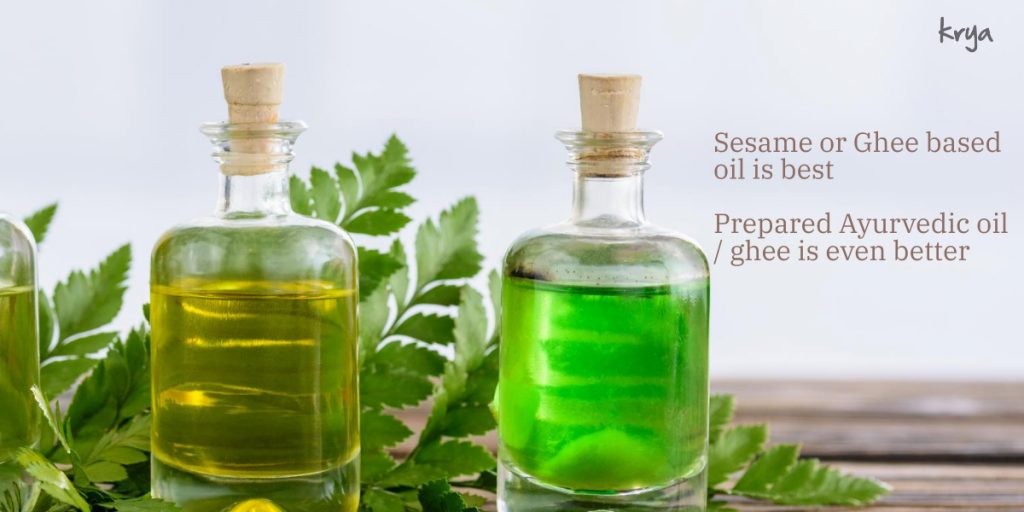
For a foot massage, we recommend avoiding products with essential oils. One must have prior knowledge of the skin before using essential oils. They are also potent and can cause adverse reactions if chosen incorrectly. Essential oils are also not a part of the classical Ayurvedic tradition.
Ayurvedic Oils for foot massage
Classical Ayurvedic oils like Dhanwantra tailam, Pinda tailam, Mahanarayana tailam can be used for Pada Abhyanga. Mahanarayana Tailam is useful for joint pain post Covid.
From the Krya range, we suggest the following:
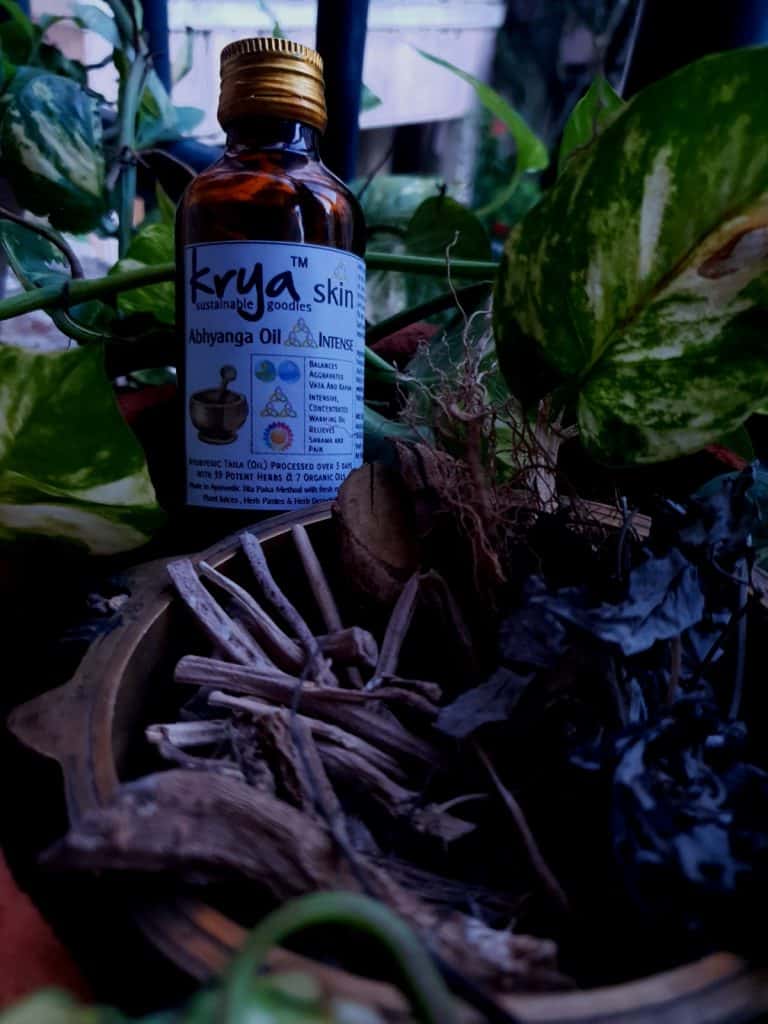
Krya Intense Abhyanga oil for vata balance
- Krya Classic Abhyanga Oil: If you have eye strain, eye fatigue along with sleep issues
- For Children under 12 with high eye strain: Krya Pushti Oil
- If you are emaciated, do high-intensity exercise, are postpartum or are a senior citizen: Combine the suitable Krya Abhyanga oil with the Krya Pushti oil (Pushti oil is excellent for rejuvenation and imparting strength)
- If you are recovering post Covid and are lean or have very high joint pain, use a combination of Intense Abhyanga Oil + Pushti Oil. For moderate – heavy build, or moderate joint pain , use a combination of Krya Classic Abhyanga Oil + Krya Pushti Oil
Ayurvedic Foot Massage Technique:
I
Ideally pada abhyanga should be done on an empty stomach or after the earlier meal is fully digested. We suggest timing this between 1-2 hours after your dinner. Best to avoid this immediately after dinner. Doing it immediately hampers the reset of pitta and Vata dosha. It can also cause digestion issues.
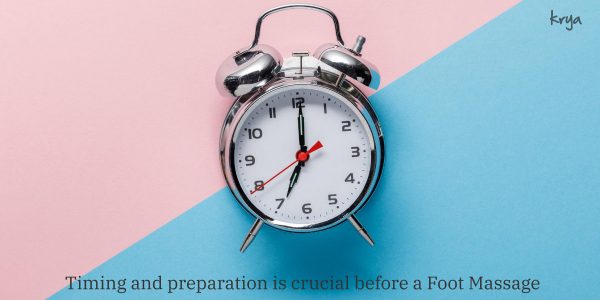
- Sit comfortably with your back straight. Place your feet on an old towel to protect your bed sheet
- Switch off the A.C. Ensure your feet are clean before you begin the process
- Use a combination of brisk shaking, extension and flexion of the toes, and twisting of the feet clockwise and anti-clockwise to warm up the feet
- Apply warm oil on the foot (one by one) and begin your Pada abhyanga
- In Ayurvedic foot massage we pay attention to the toes, the space between the toes, the soles of the feet, the Achilles tendon, and the alignment of the fine bones and ligaments in the entire foot and the overall structure of the foot
- Do watch our video on the complete Pada abhyanga technique for better sleep and relaxation here.
- If you have less time available, follow a smaller set of repetitions per movement. Children should have shorter, gentler pada abhyangas.
- After the pada abhyanga, wipe the excess oil off the feet with a warm damp towel. For senior citizens, we recommend washing the foot with a paste of the Krya Intense ubtan in warm water and wiping the feet dry before sleeping. This is to prevent slips and also to protect from excess Kapha aggravation
Watch the Pada Abhyanga Video
To conclude: Ayurvedic foot massage for better sleep and wellness
Ayurvedic wellness regimes are carefully studied and suggested by the Ayurvedic Acharyas to help build health, harmony and balance into our lives. With a rise in stress, and anxiety today due to a variety of reasons, adopting a simple wellness routine like an ayurvedic foot massage can help us wind down, relax the body and promote better sleep.
We hope this article inspired you to try out this ancient wellness technique. You could read more about the benefits of a pada abhyanga here. Read this piece to understand how a daily abhyanga can additionally benefit you. For any further questions do write to us or WhatsApp Us.

